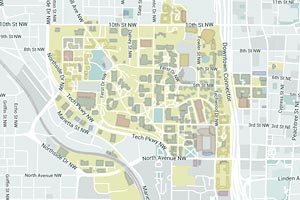1. Speaker Kevin Zeng
Deep Reinforcement Learning Using Data-Driven Reduced-Order Models Discovers and Stabilizes Low Dissipation Equilibria
Deep reinforcement learning (RL), a data-driven method capable of discovering complex control strategies for high-dimensional systems, requires substantial interactions with the target system, making it costly when the system is computationally or experimentally expensive (e.g. flow control). We mitigate this challenge by combining dimension reduction via an autoencoder with a neural ODE framework to learn a low-dimensional dynamical model, which we substitute in place of the true system during RL training to efficiently estimate the control policy. We apply our method to data from the Kuramoto-Sivashinsky equation. With a goal of minimizing dissipation, we extract control policies from the model using RL and show that the model-based strategies perform well on the full dynamical system and highlight that the RL agent discovers and stabilizes a forced equilibrium solution, despite never having been given explicit information about this state’s existence.https://arxiv.org/abs/2104.05437
2. Speaker Carlos Perez de Jesus
Data-driven estimation of inertial manifold dimension for chaotic Kolmogorov flow and time evolution on the manifold
Model reduction techniques have previously been applied to evolve the Navier-Stokes equations in time, however finding the minimal dimension needed to correctly capture the key dynamics is not a trivial task. To estimate this dimension we trained an undercomplete autoencoder on weakly chaotic vorticity data (32x32 grid) from Kolmogorov flow simulations, tracking the reconstruction error as a function of dimension. We also trained a discrete time stepper that evolves the reduced order model with a nonlinear dense neural network. The trajectory travels in the vicinity of relative periodic orbits (RPOs) followed by sporadic bursting events. At a dimension of five (as opposed to the full state dimension of 1024), power input-dissipation probability density function is well-approximated; Fourier coefficient evolution shows that the trajectory correctly captures the heteroclinic connections (bursts) between the different RPOs, and the prediction and true data track each other for approximately a Lyapunov time.
Event Details
Date/Time:
-
Date:Wednesday, October 27, 2021 - 3:00pm to 4:00pm
Location:
https://bluejeans.com/159924180 Via bluejeans.com
For More Information Contact
Predrag Cvitanovic


